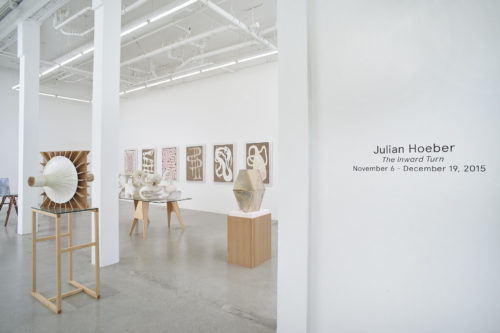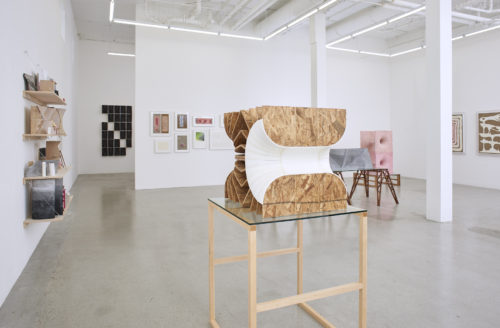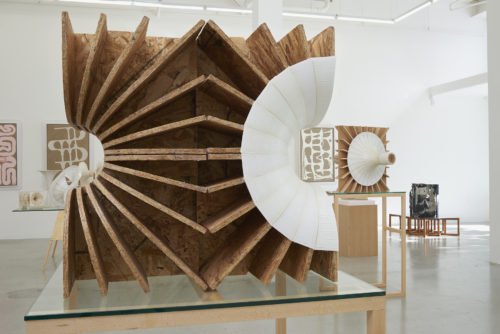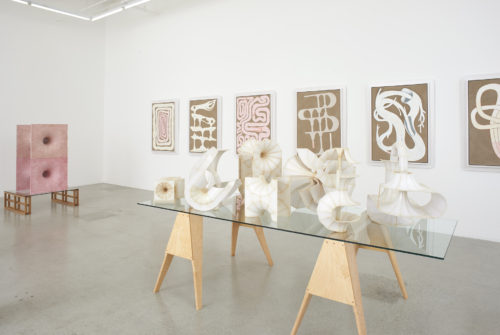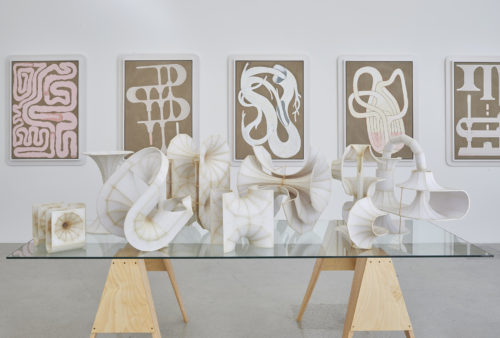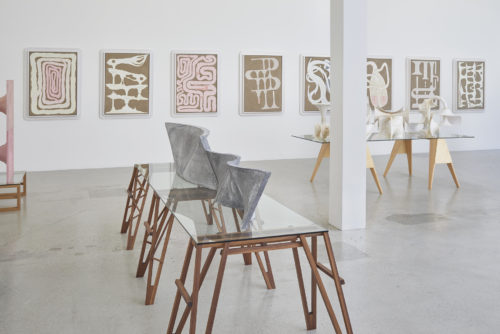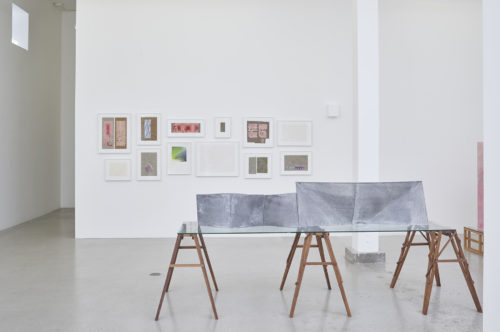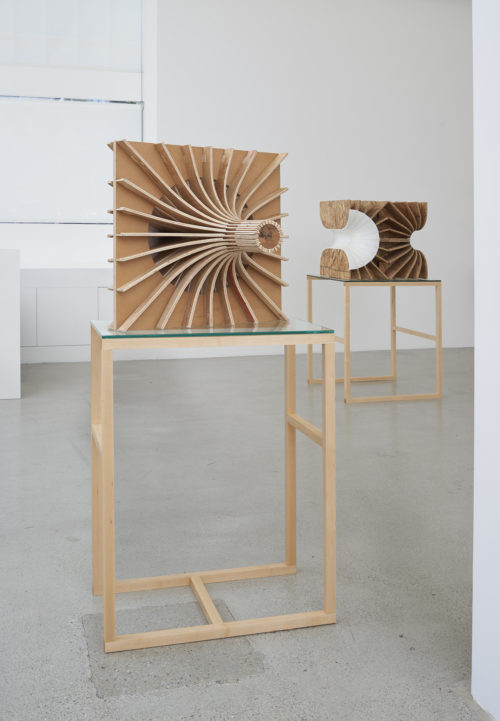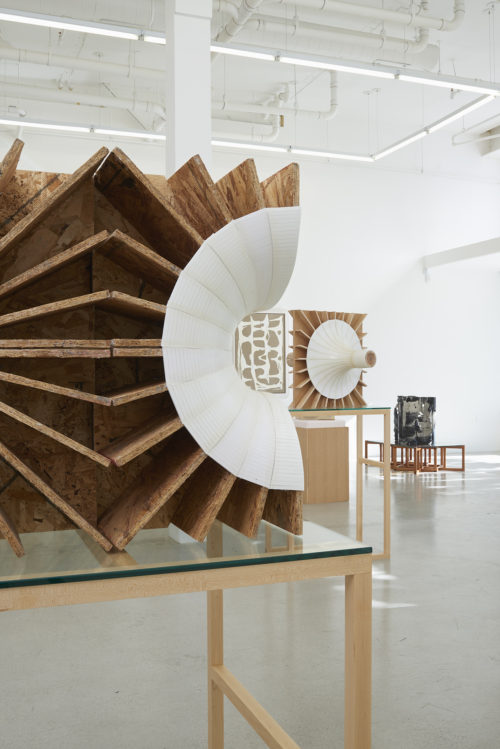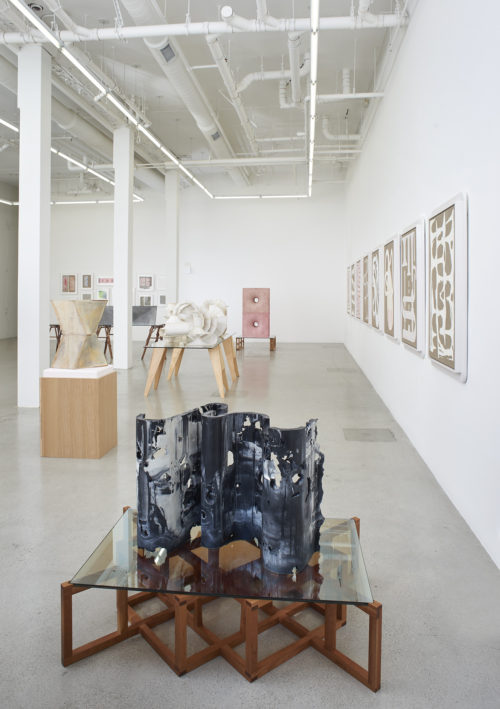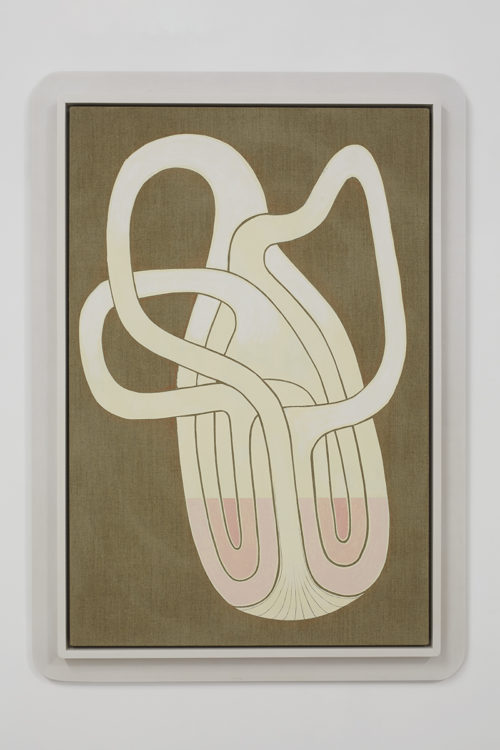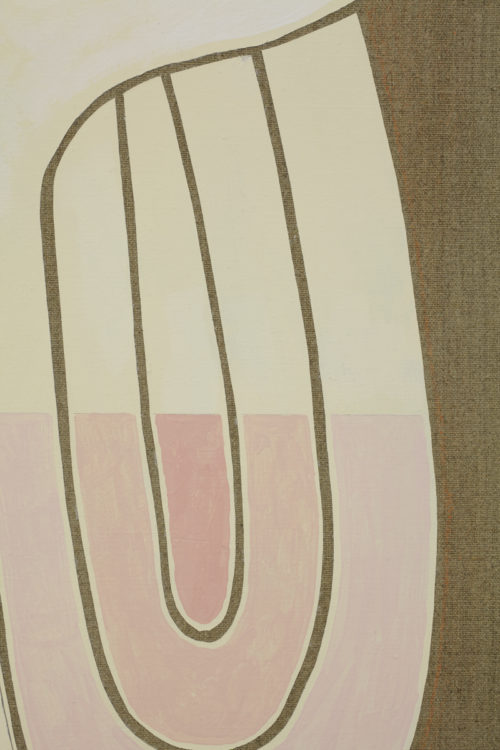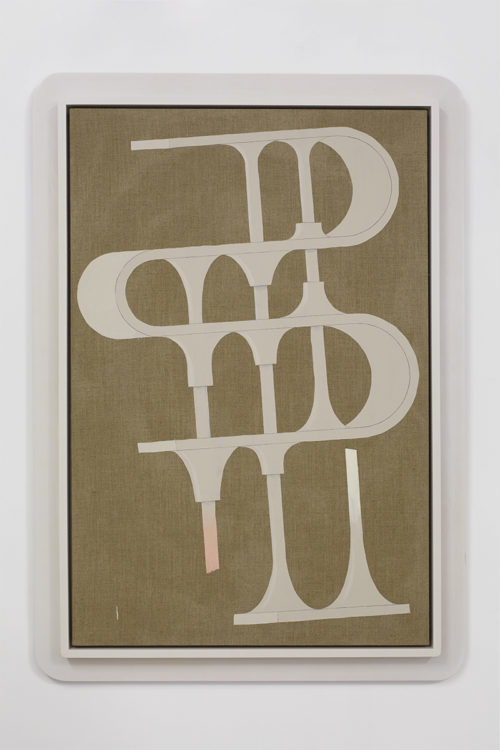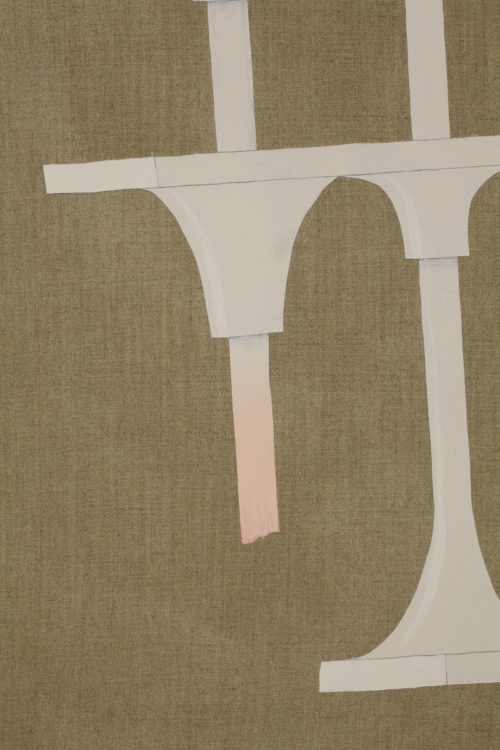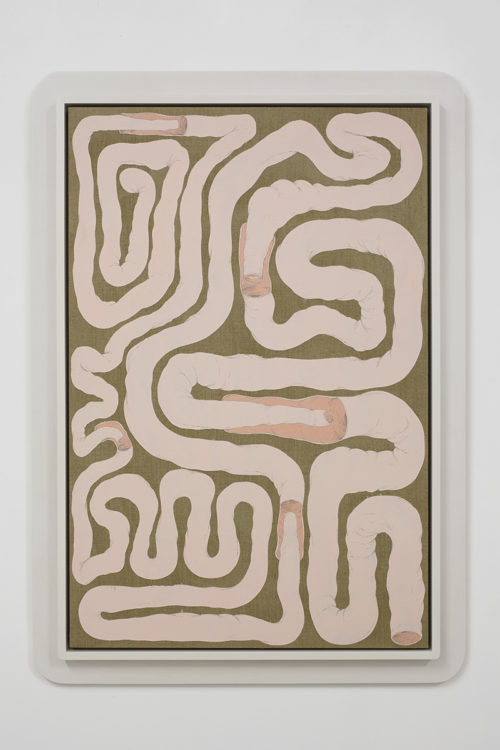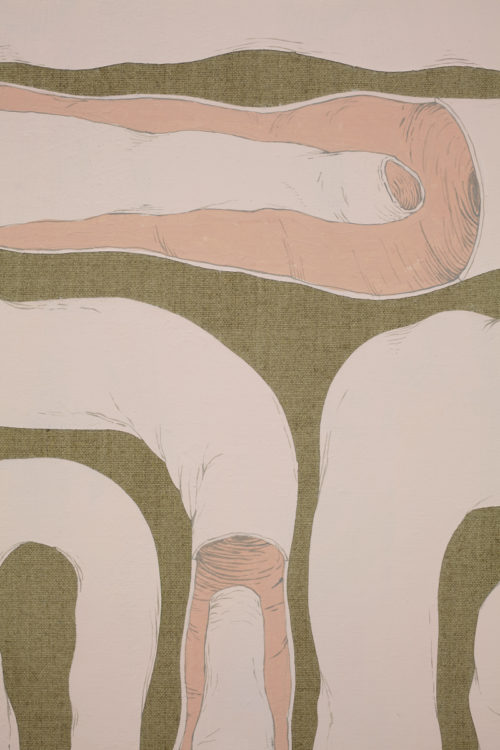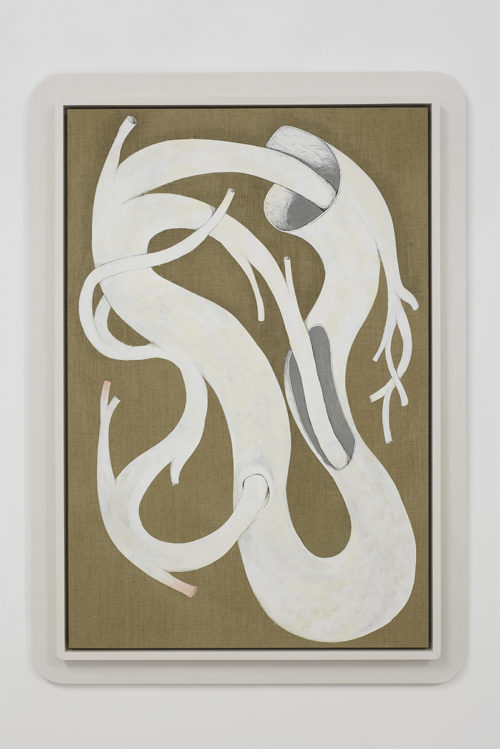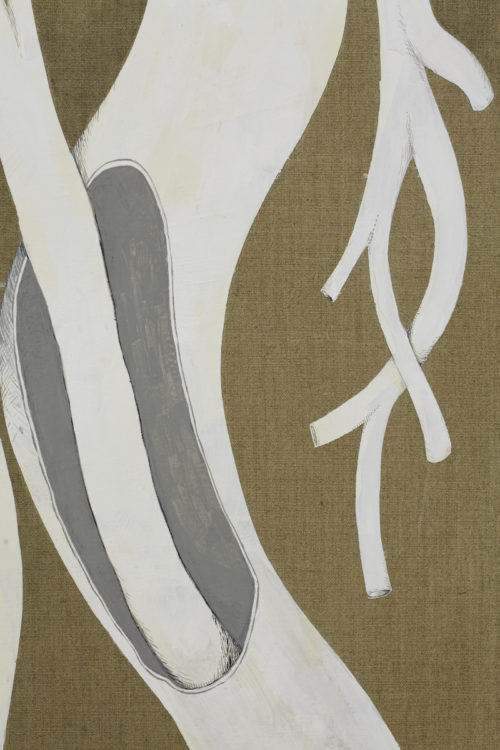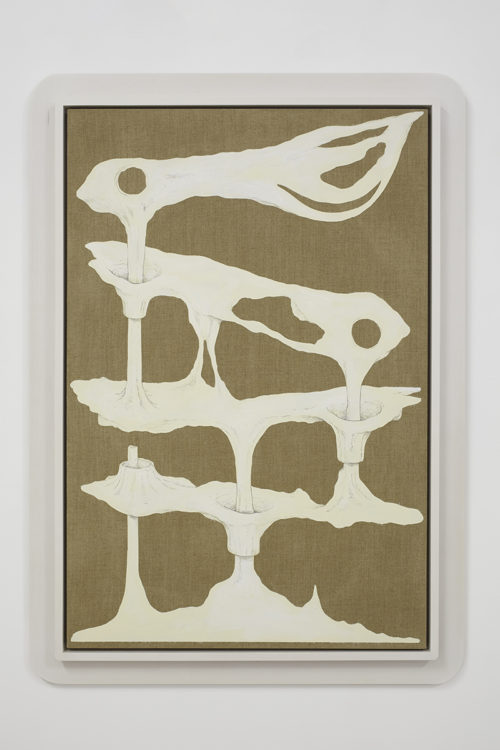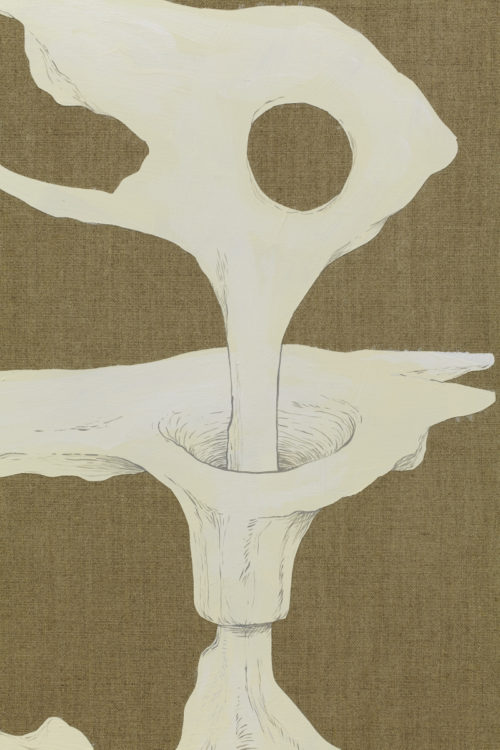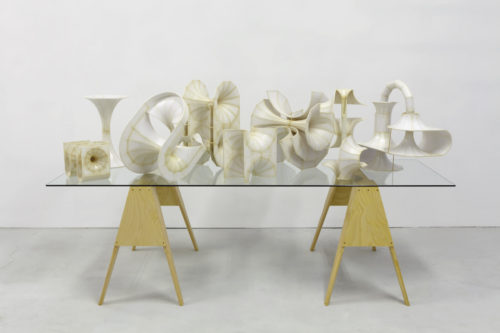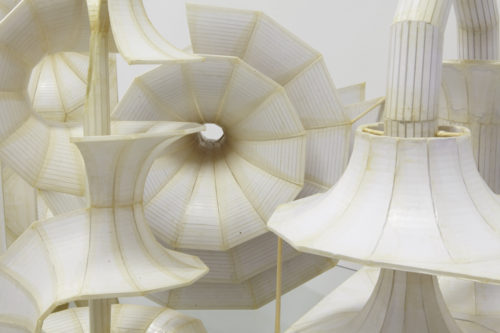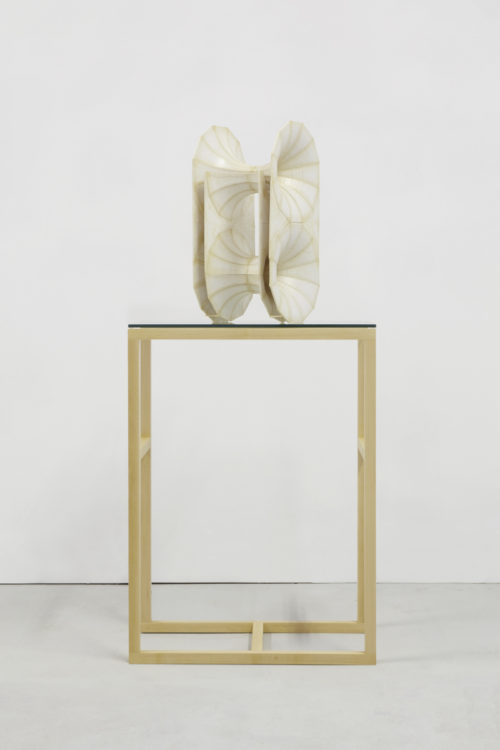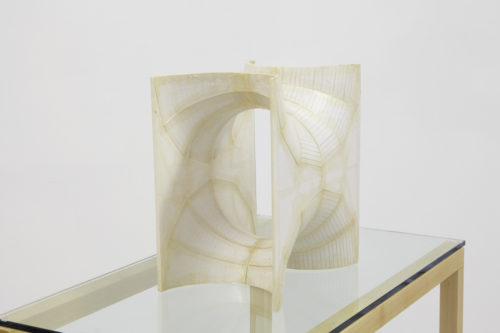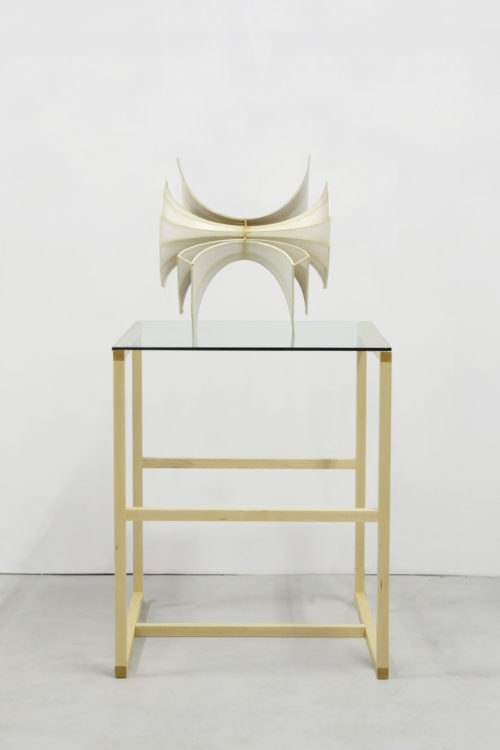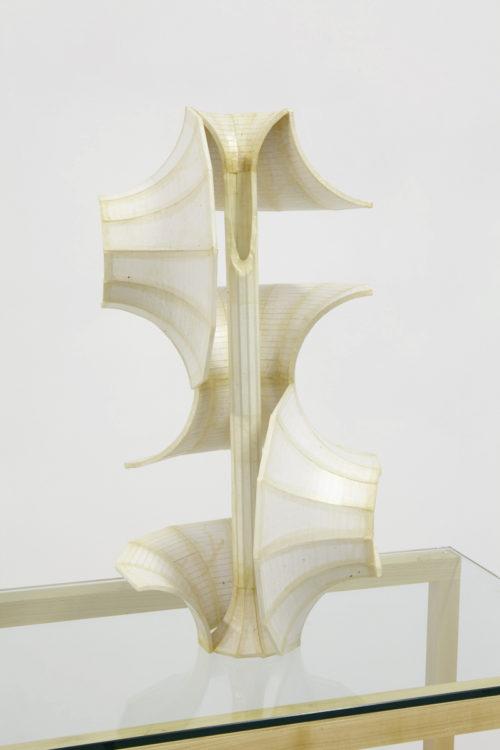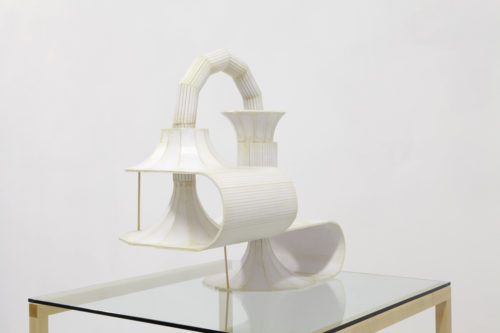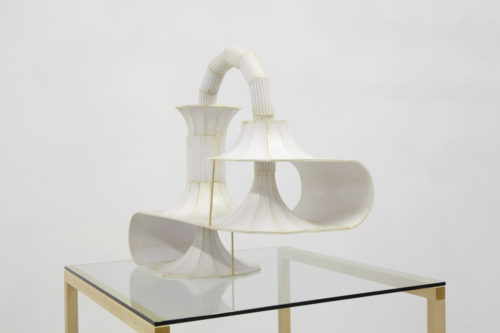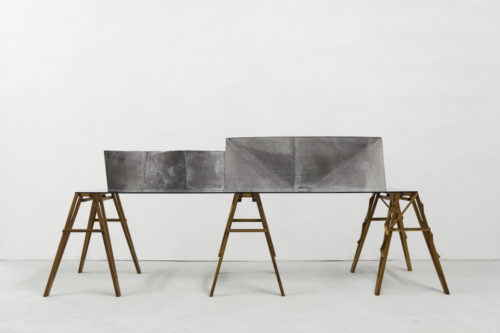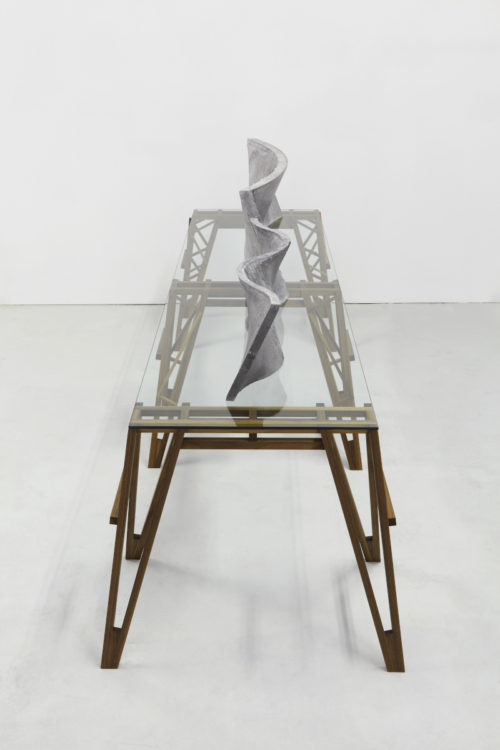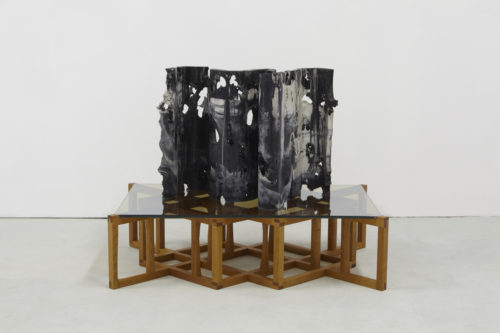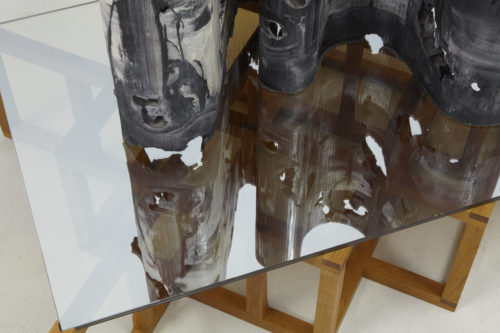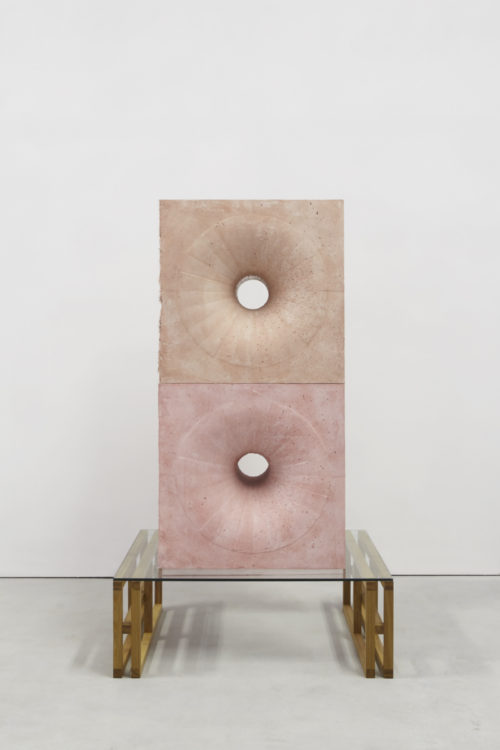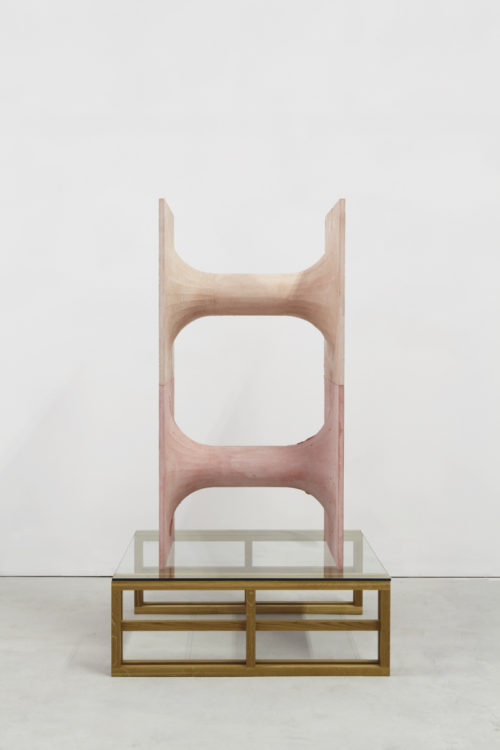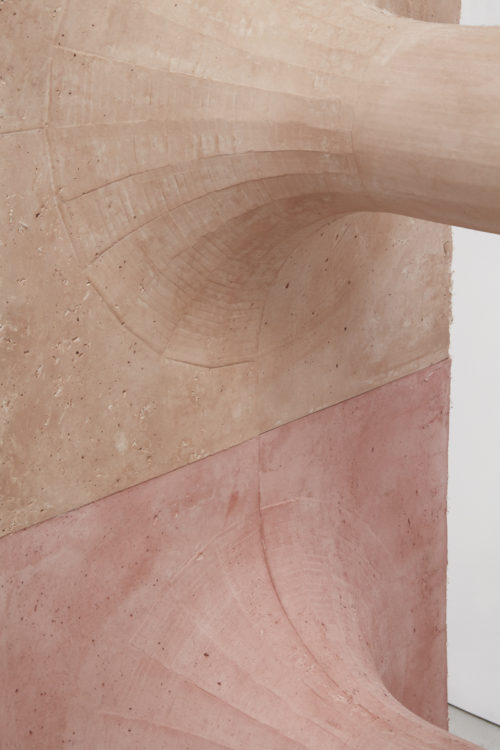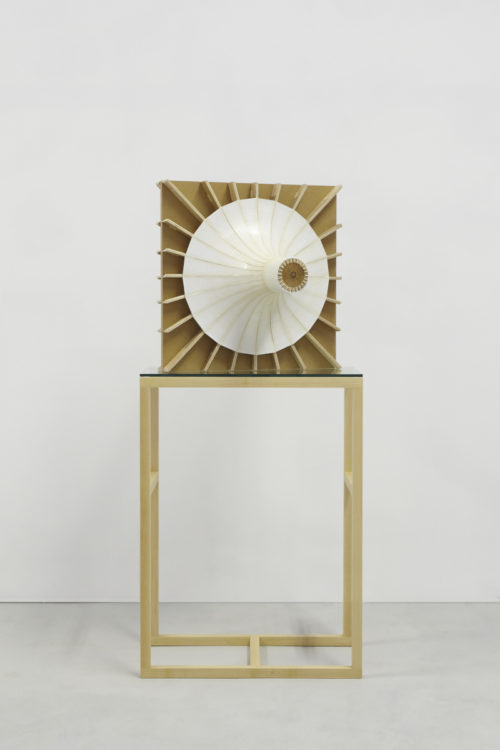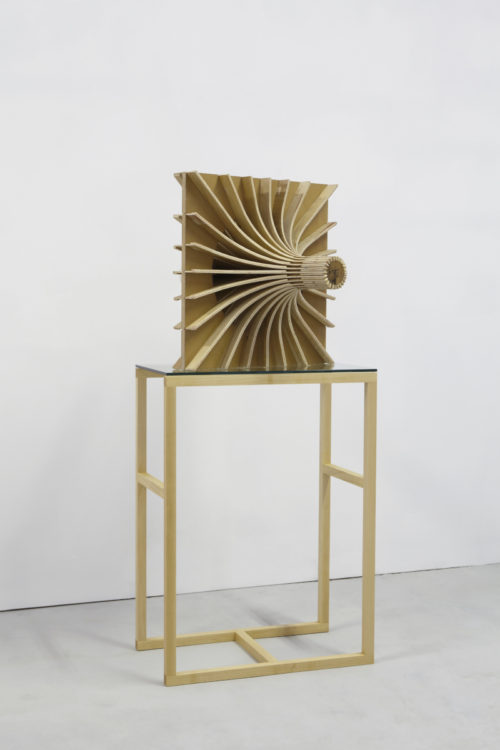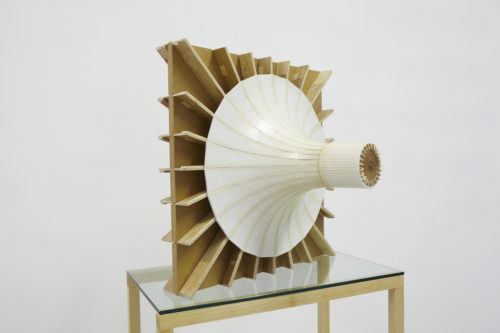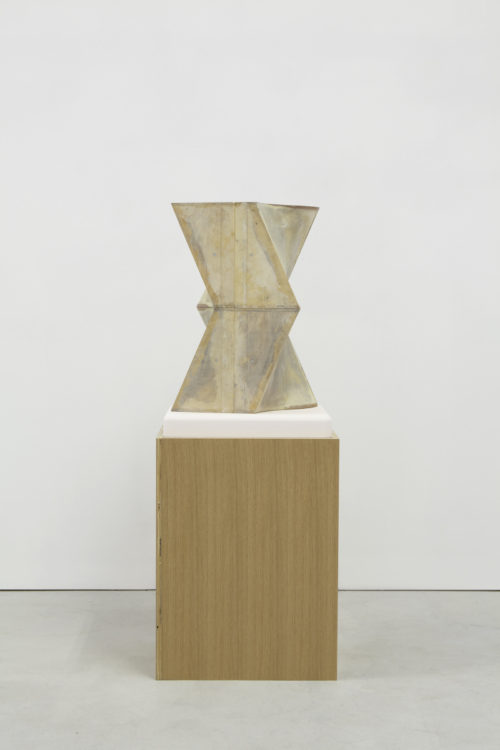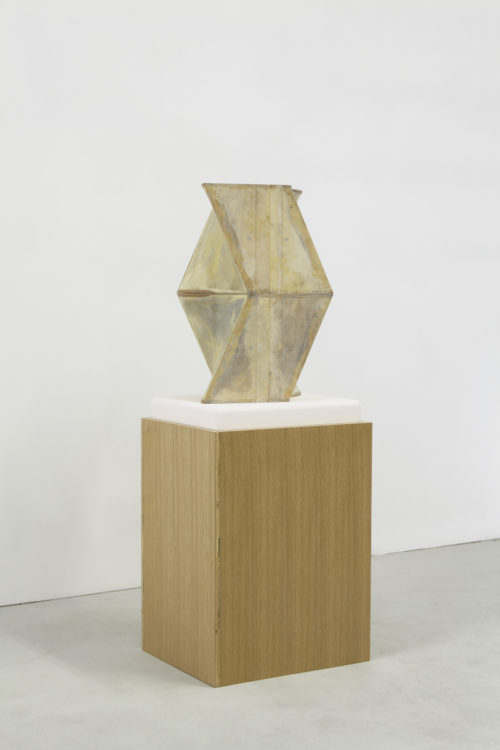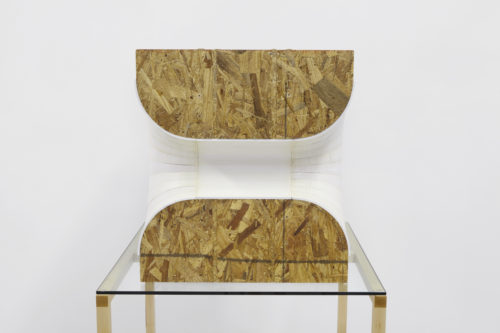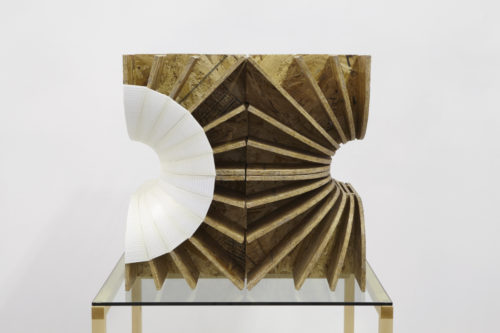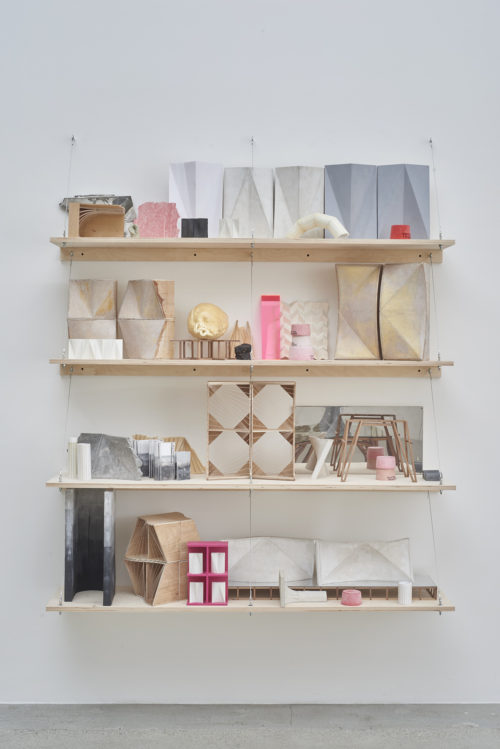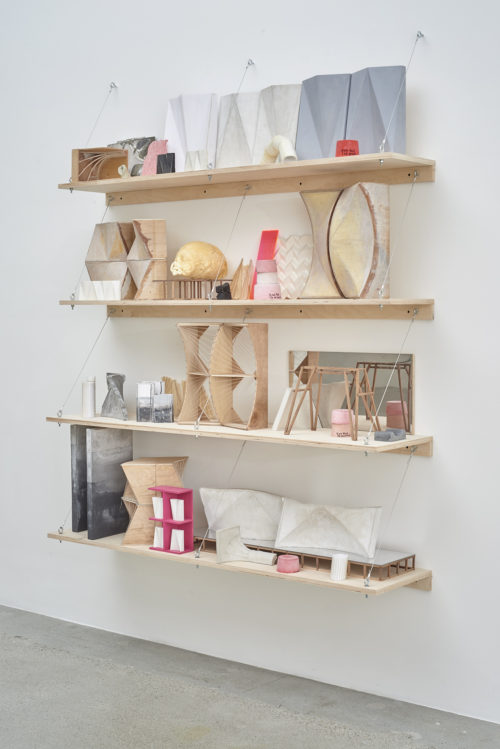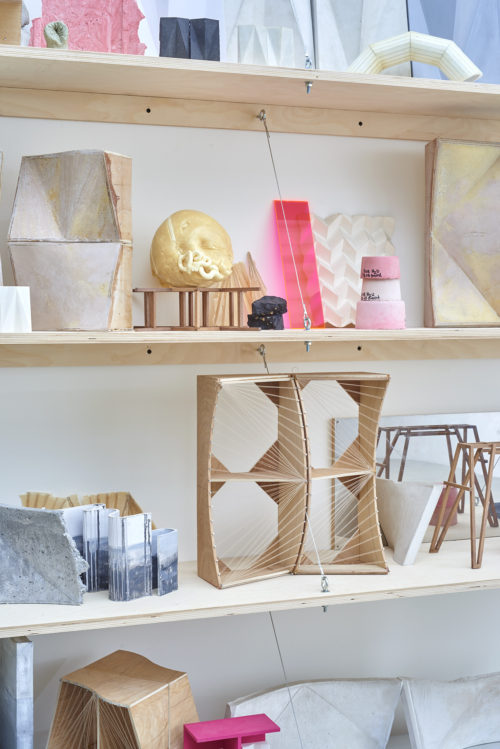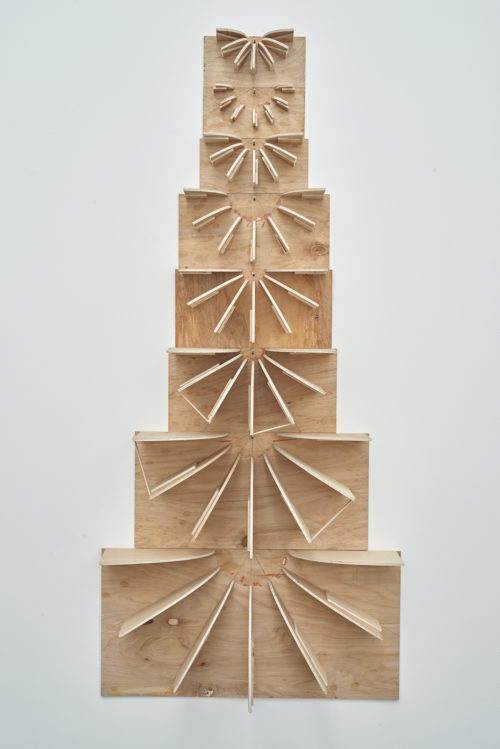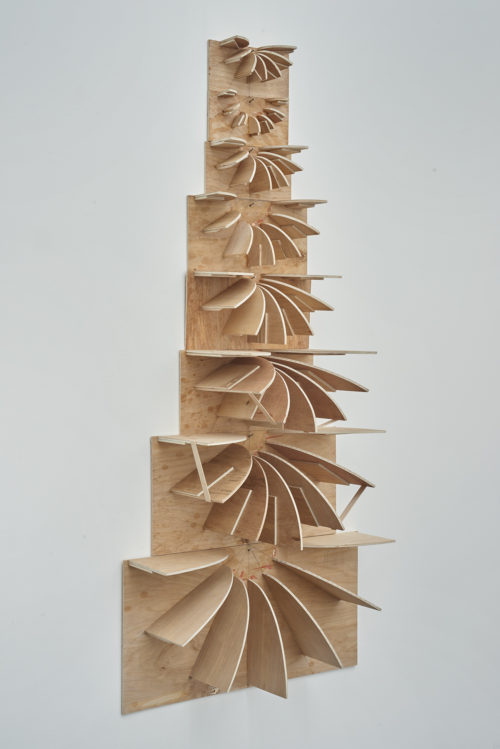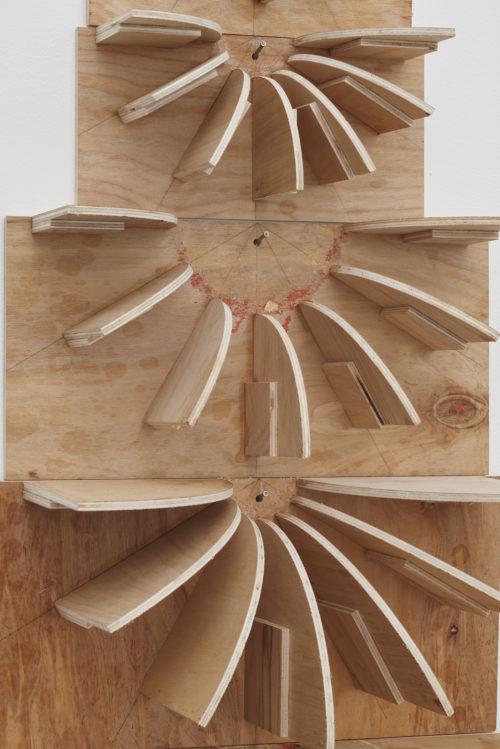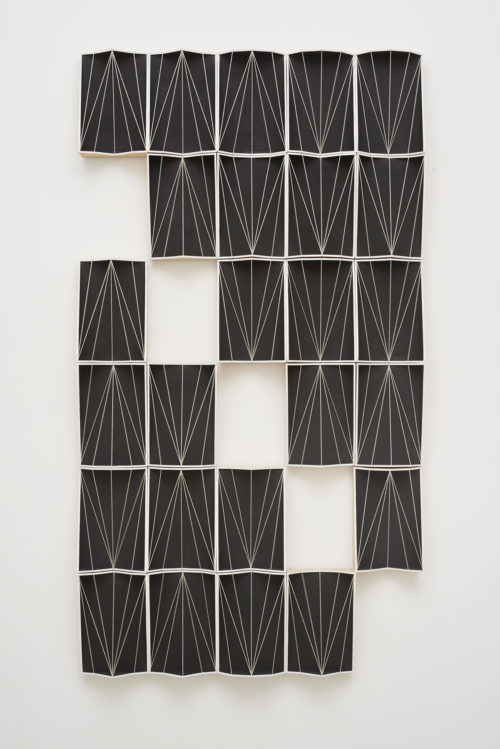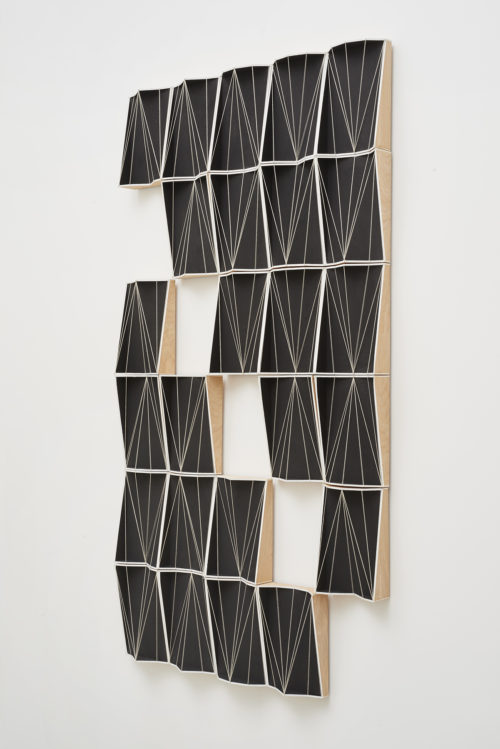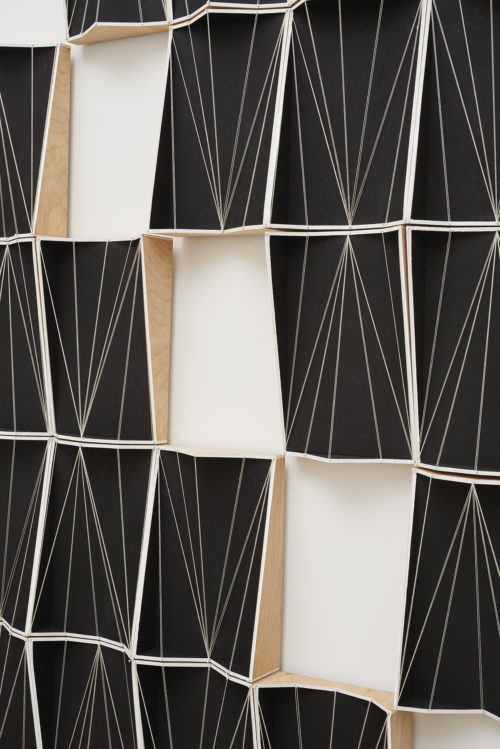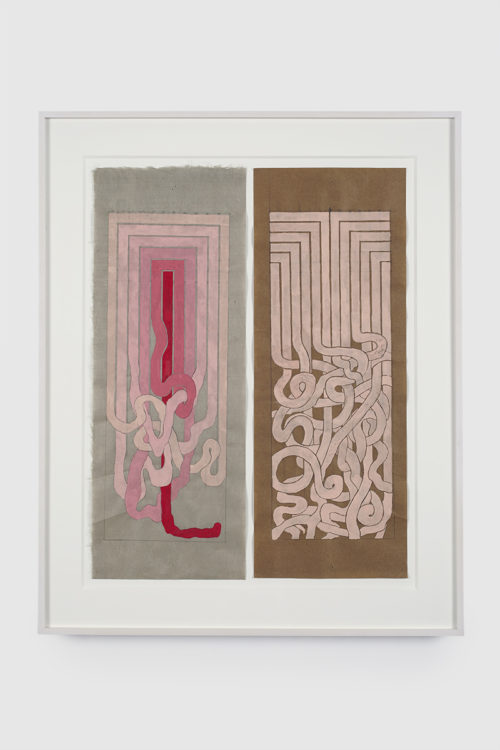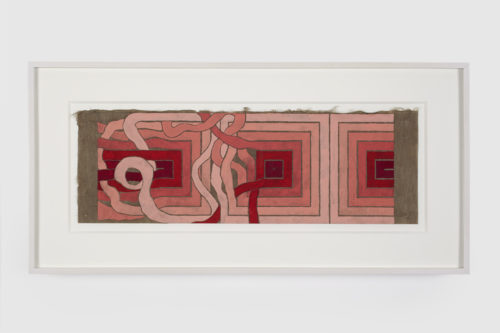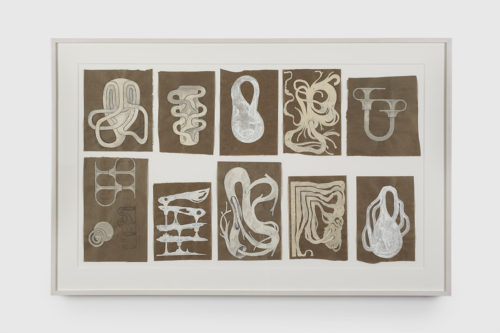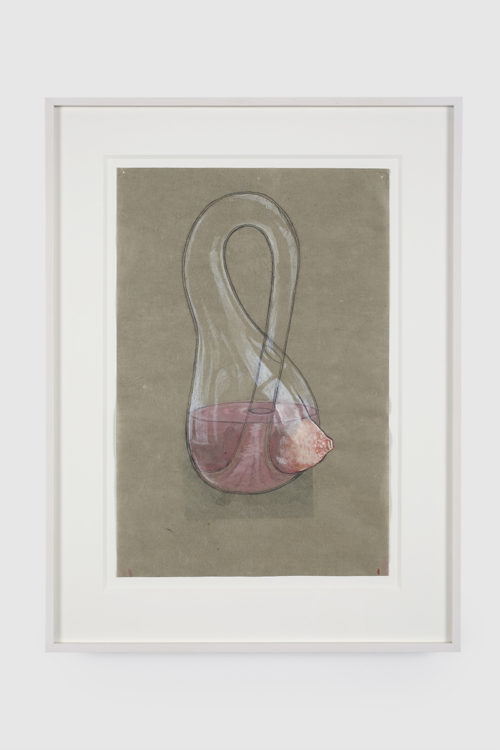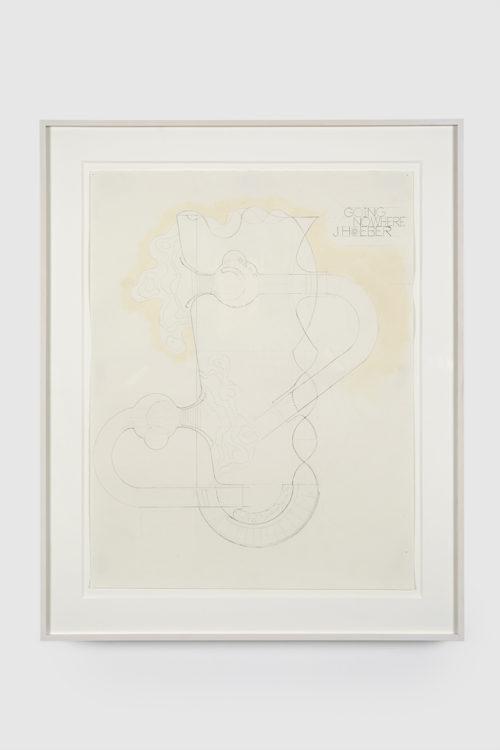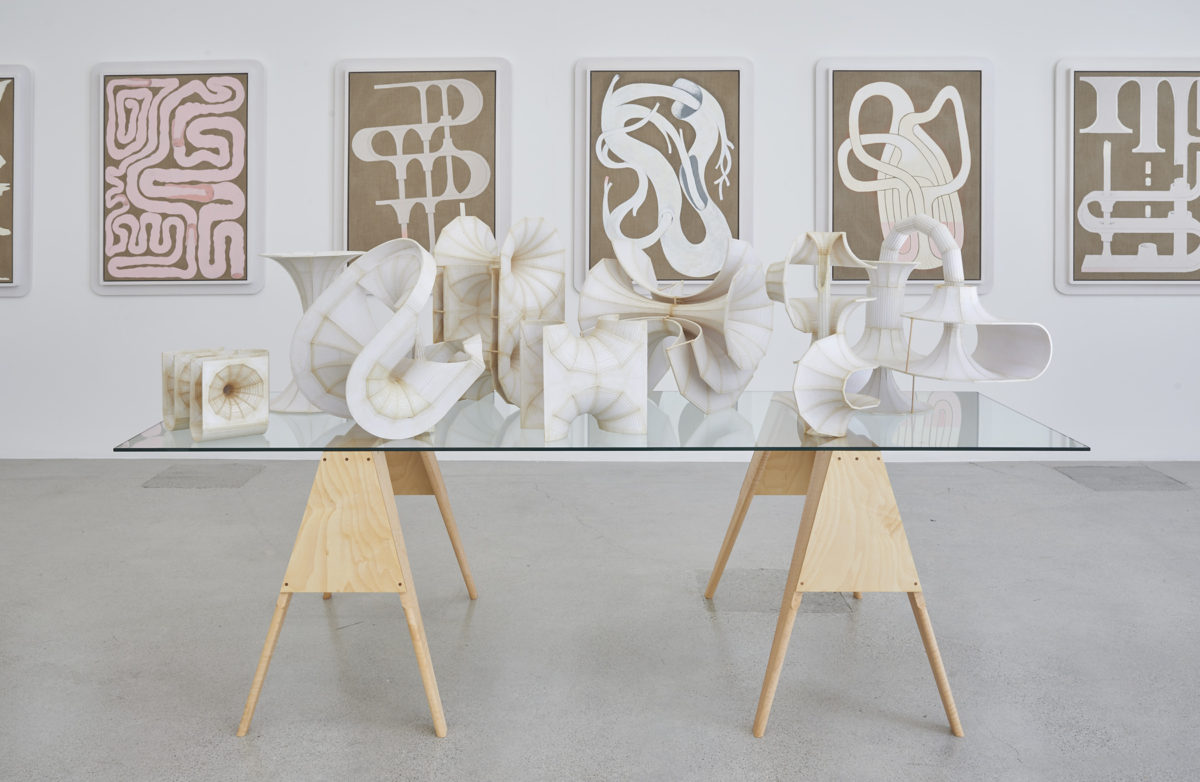
The Inward Turn
November 6-December 19, 2015
For the past year, Hoeber has been imagining a universe of architectural and corporeal interiors whose ambiguous forms invite the viewer to free associate. This work continues the artist’s dual exploration of the expressive potential of mathematical geometry and the conceptual discipline (and furtive rationality) of expressionistic artistic styles. The result is the artist’s own breed of surreal abstraction.
“The Inward Turn” is about a journey that repeatedly returns to its center, a physical manifestation of introspection, a seemingly inefficient but ultimately rewarding way of working, characterized by the loop. For Hoeber, the key term is rumination, which is a synonym for contemplation, musing and mediation, but also chewing and digesting. Indeed, the Latin etymology of “rumen” refers to the first chamber of a cow’s stomach. As is so often the case, a physical process elucidates an abstract one; a metaphor becomes standard vocabulary; “chewing the cud” invariably leads to “pondering.” In keeping with this theme, the show has a quiet, thoughtful palette of grays, creams, beiges and fleshy pinks.
The aesthetic forms of “The Inward Turn” are structural and biomorphic, mathematical and intuitive. Discovered in 1858, the Möbius strip is a surface with only one side, which is homeomorphic to a circle and non-orientable. As such, it is analogous to the circumlocutions of introspection. First described in 1882 by German mathematician Felix Klein, the Klein bottle is also a one-sided, non- orientable surface, which, if strolled along, would take the walker back to their point of origin but, upon arrival, they would find themselves upside down. These two forms are among many visual puzzles that are integral to the sculptures, paintings and drawings in this show, which generally blur the boundaries between positive and negative space, inside and outside, rational and irrational.
An important backstory for the artist relates to a narrative he recounts to himself in the studio about a project called “Going Nowhere” that is centered on the design of an imaginary airport terminal in which people fly off only to land back in the same place. Whether the building is constructed or not is irrelevant. The point of the project is to concoct and then solve a particular set of problems in which Hoeber finds himself engaged with the thinking of architects such as Aldo Van Eyck, Eero Saarinen and Robert Venturi, sculptors such as Lee Bontecou and Anish Kapoor, painters as varied as Jim Shaw and the early Francis Picabia. Indeed, one idiosyncratic reference is Marcel Duchamp’s Chocolate Grinder no 1 (1914), which Hoeber, a native of Philadelphia, saw in the museum regularly and as a poster in his grandmother’s living room all the time.
Julian Hoeber (b. 1974, Philadelphia, Pennsylvania) has a BA in Art History from Tufts University, a BFA from the School of the Museum of Fine Arts, Boston, and an MFA from Art Center College of Design, Pasadena. His work is in the permanent collections of the Museum of Modern Art (New York), MOCA Los Angeles, Hammer Museum (Los Angeles), Rosenblum Collection (Paris), Tang Museum (Saratoga Springs New York), Western Bridge Museum (Seattle), Rubell Family Collection (Miami) and Deste Foundation Centre for Contemporary Art (Athens). Hoeber lives and works in Los Angeles.
Press: Wallpaper, SFAQ, Artforum, SF Gate, Art Practical
-
Triple Klein Bottle Cross Section
Flashe, colored pencil and acrylic on linen with artist’s frame
48 1/2 x 34 1/2 inches
2015
- Detail
-
Style Knot
Flashe and acrylic on linen with artist’s frame
48 1/2 x 34 1/2 inches
2015
- Detail
-
Intestinal Floorplan / Security Apparatus
Flashe and acrylic on linen with artist’s frame
48.5 x 34.5 inches
2015
- Detail
-
Cardiac Section
Flashe and acrylic on linen with artist’s frame
48.5 x 34.5 inches
2015
- Detail
-
Ruminating Elevation
Flashe and acrylic on linen with artist’s frame
48 1/2 x 34 1/2 inches
2015
- Detail
-
Thought of Forms/Form of Thoughts 01-08
Sculptures: Foamcore, koz and shellac
Pedestal: Curly maple, birch plywood, hardwood dowels, oil finish and glass
Dimensions variable
2015
- Detail
- Detail
-
Thought of Forms/Form of Thoughts 01
Sculpture: Foamcore, koz and shellac
Pedestal: Curly maple, birch plywood, hardwood dowels, oil finish and glass
9 x 12 x 10 inches
2015
-
Thought of Forms/Form of Thoughts 02
Sculpture: Foamcore, koz and shellac
Pedestal: Curly maple, birch plywood, hardwood dowels, oil finish and glass
24 x 11 x 12 inches
2015
-
Thought of Forms/Form of Thoughts 03
Sculpture: Foamcore, koz and shellac; Pedestal: Curly maple, birch plywood, hardwood dowels, oil finish and glass
12 x 12 x 8 inches
2015
-
Thought of Forms/Form of Thoughts 05
Sculpture: Foamcore, koz and shellac
Pedestal: Curly maple, birch plywood, hardwood dowels, oil finish and glass
21 x 29 x 19 inches
2015
-
Thought of Forms/Form of Thoughts 06
Sculpture: Foamcore, koz and shellac; Pedestal: Curly maple, birch plywood, hardwood dowels, oil finish and glass
22 x 12 x 11 inches
2015
-
Thought of Forms/Form of Thoughts 08
Sculpture: Foamcore, koz and shellac; Pedestal: Curly maple, birch plywood, hardwood dowels, oil finish and glass
24 x 14 x 27 inches
2015
- Alternate view
-
Compound Curved Wall
Sculpture: Pigmented fiberglass, reinforced ultracal cement
Pedestal: Walnut with catalyzed oil finish and glass
Sculpture: 5 parts, 84 x 12 x 18 inches
Pedestal: 114 x 37 x 29 inches
2015
- Alternate view
-
Scholars Rock Proxy
Sculpture: Pigmented and unpigmented ultracal cement and acrylic lacquer
Pedestal: Cherry wood with catalyzed oil finish and MirroView glass
Sculpture: 18 x 22 3/4 x 30 inches
Pedestal: 12 1/2 x 29 x 46 inches
2015
- Detail
-
Brutalist Organs
Sculpture: Fiberglass reinforced ultracal cement with pigment and acrylic lacquer
Pedestal: Oak with catalyzed oil finish and glass
Sculpture: 2 pieces, 24 x 24 x 24 inches
Pedestal: 35 x 25 x13 inches
Total height: 61 inches
2015
- Alternate view
- Detail
-
Negative Space of Organ (Core)
Sculpture: OSB, foamcore, kozo, shellac and hardware; Pedestal: Maple, glass, catalyzed oil finish
Sculpture: 22 x 25 x 25 inches; Pedestal: 28 x 18 x 38 inches
2015
- Alternate view
- Detail
-
Negative Space of Compound Curved Wall
Sculpture: Birch plywood, polyurethane, rigid foam, epoxy, pigment and polyester resin; Pedestal: Oak veneer plywood, MDF, latex paint and lacquer
Sculpture:12 x 16 x 24 inches; Total size with pedestal: 16 x 20 x 54 inches
2015
- Alternate view
-
Negative Space of Organ (Shell)
Sculpture: OSB, pine, foamcore, kozo, shellac and hardware; Pedestal: Maple, glass, catalyzed oil finish
Sculpture: 22 x 25 x 25 inches; Pedestal: 30 x 30 x 36 inches
2015
- Alternate view
-
Form Index
Materials variable
Installed dimensions variable
Shelving unit: 72 x 60 x 14 inches
2015
- Alternate view
- Detail
-
Negative Space Thought
Plywood, glue, shellac, popsicle sticks and nails
55 x 25 x 9.5 inches
2015
- Alternate view
- Detail
-
Going Nowhere Vector Model, Bas Relief Tile, Second Level Complexity, Negative Spaces
Plywood, acrylic paint, brads, cotton string and MDF and plywood backing board
25 parts, Each: 12 x 83 1/2 inches
Overall: 72 x 40 x 4 inches
2015
- Alternate view
- Detail
-
Angular to Curved Experiments 1&2
Gouache and graphite on mulberry paper
18 x 7 inches each piece
2015
-
Angular to Curved Experiments 3
Gouache and graphite on mulberry paper
7 x 18 inches each piece
2015
-
Ten Form Experiments
Gouache and graphite on mulberry paper
30 x 40 inches
2015
-
Melanie Klein Bottle
Gouache and graphite on mulberry paper
15 x 10 inches
2015
-
Bas-Relief Tile and Facade
Gouache and graphite on mulberry paper
15 x 10 inches
2015
-
Going Nowhere Plan, version 2
Graphite and flashe on paper
22 x 17 inches
2015
